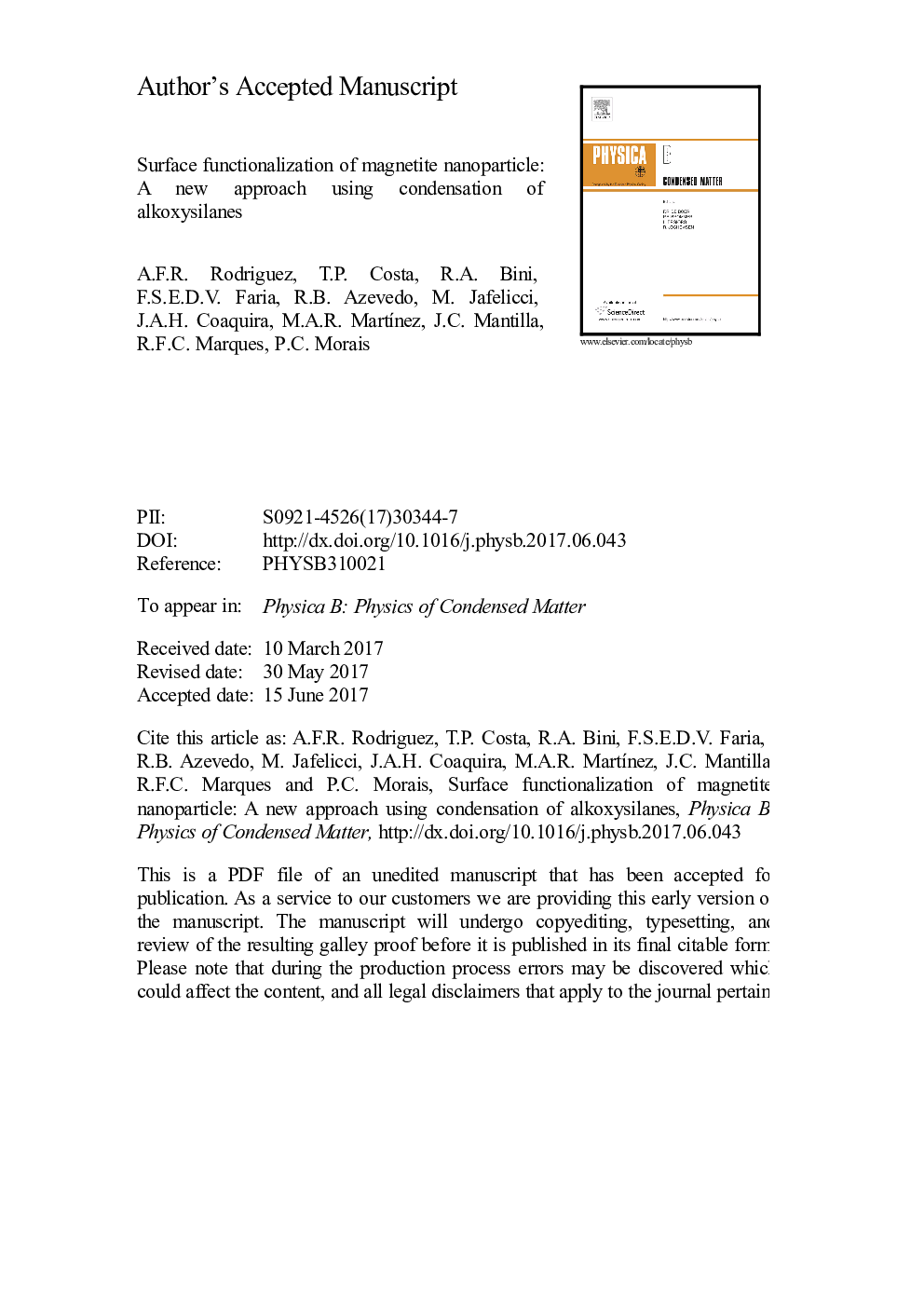| Article ID | Journal | Published Year | Pages | File Type |
|---|---|---|---|---|
| 5491794 | Physica B: Condensed Matter | 2017 | 17 Pages |
Abstract
In this study we report on successful production of two samples (BR15 and BR16) comprising magnetite (Fe3O4) nanoparticles (~10Â nm) surface-functionalized via hydrolysis and condensation of alkoxysilane agents, namely 3-aminopropyl-trimethoxisilane (APTS) and N-propyl-trimethoxisilane (NPTS). The as-produced samples were characterized using transmission electron microscopy (TEM), x-ray diffraction (XRD), magnetization measurements (5Â K and 300Â K hysteresis cycles and zero field-cooled/field-cooled measurements), and Mössbauer spectroscopy (77 and 297Â K). The Mössbauer data supported the model picture of a core-shell magnetite-based system. This material system shows shell properties influenced by the surface-coating design, either APTS-coated (BR15) or APTS+NPTS-coated (sample BR16). Analyses of the Mössbauer spectra indicates that the APTS-coated sample presents Fe(III)-rich core and Fe(II)-rich shell with strong hyperfine field; whereas, the APTS+NPTS-coated sample leads to a mixture of two main nanostructures, one essentially surface-terminated with APTS whereas the other surface-terminated with NPTS, both presenting weak hyperfine fields compared with the single surface-coated sample. Magnetization measurements support the core-shell picture built from the analyses of the Mössbauer data. Our findings emphasize the capability of the Mössbauer spectroscopy in assessing subtle differences in surface-functionalized iron-based core-shell nanostructures.
Related Topics
Physical Sciences and Engineering
Physics and Astronomy
Condensed Matter Physics
Authors
A.F.R. Rodriguez, T.P. Costa, R.A. Bini, F.S.E.D.V. Faria, R.B. Azevedo, M. Jr, J.A.H. Coaquira, M.A.R. MartÃnez, J.C. Mantilla, R.F.C. Marques, P.C. Morais,
